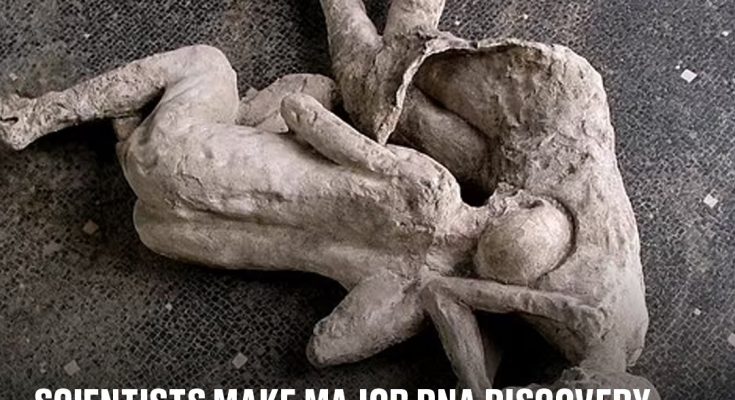Scientists studying the remains of people who died in the devastating Mount Vesuvius eruption that buried the ancient city of Pompeii have made major DNA discoveries more than a 1,000 years after the event took place.
It was back in 79 AD that the Italian volcano erupted 33 kilometres in to the sky, throwing molten rock, hot ash, and super hot clouds of gas across the Bay of Naples.
For those who want to try and quantify it in modern terms, the mount of thermal energy released in the eruption was 100,000 times that of the atomic bombs dropped on Hiroshima and Nagasaki

The eruption of Mt Vesuvius was one of the deadliest volcano blasts in history, with several Roman towns destroyed and covered. Pompeii and Herculaneum were two settlements wiped off the face of the Earth and buried under pyroclastic surges, with left victims frozen in suspended actions as they instantly died.
To this day the death toll remains unknown, with 20,000 people living in both cities. So far, remains of more than 1,500 people have been found across the two locations.
After the ruins of Pompeii were excavated, with it now a UNESCO World Heritage Site, the desperate remains of people caught up in the eruption were found by archeologists.

Cast of a man with a child, both of whom died in Pompeii (Marilla Sicilia/Archivio Marilla Sicilia/Mondadori Portfolio via Getty Images)
Observers who look at such remains see the final moments and stories in the plaster casts later made of their bodies, like a mother holding a child and two women embracing as they die.
But new DNA evidence suggests things were not as they seem, and these prevailing interpretations come from looking at the ancient world through modern eyes.
“We were able to disprove or challenge some of the previous narratives built upon how these individuals were kind of found in relation to each other,” said Alissa Mittnik of the Max Planck Institute for Evolutionary Anthropology in Germany.
“It opens up different interpretations for who these people might have been.”
Ms Mittnik and her colleagues carried out tests on 14 casts of victims found in Pompeii’s ruins, where they found that they had been wrongly identified.

It wasn’t just people who perished in the eruption (Ivan Romano/Getty Images)
Instead of being family, one cast of a man holding a child found that the youngster was unrelated to the person assumed to be their parent. This discovery was found in a location known as ‘the house of the golden bracelet’; named after an intricate piece of jewellery, for which the house was named, reinforcing the impression that the victim was a woman.
And at least one of the two people locked in an embrace, long assumed to be sisters or a mother and daughter, was a man. Their research was published on Thursday in the journal Current Biology.

Long thought to be a sister with their mother or daughter, the other person was in fact a man (Archaeological Park of Pompeii)
The study builds upon research from 2022 when scientists sequenced the genome of a Pompeii victim for the first time and confirmed the possibility of retrieving ancient DNA from the human remains that still exist.
“They have a better overview of what’s happening in Pompeii because they analysed different samples,” said Gabriele Scorrano of the University of Rome Tor Vergata, a co-author of that research who was not involved in the current study.
“We actually had one genome, one sample, one shot.”
Featured Image Credit: Archaeological Park of Pompeii
Topics: World News, Education, Science, Environment, History



